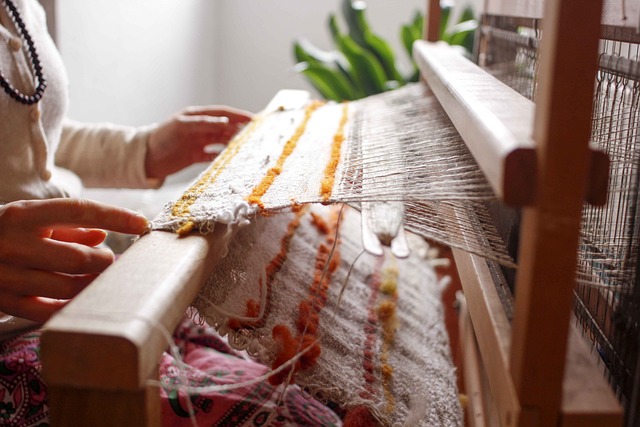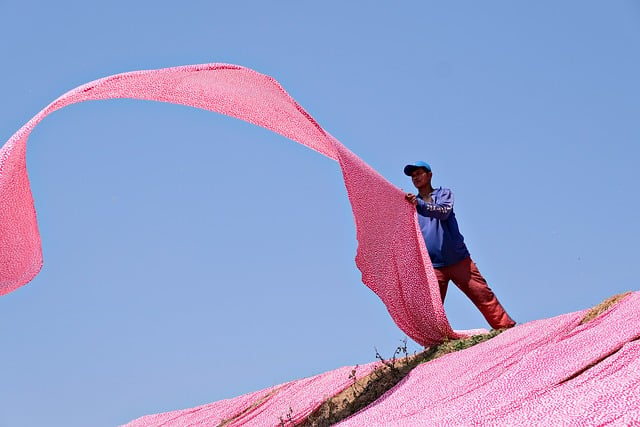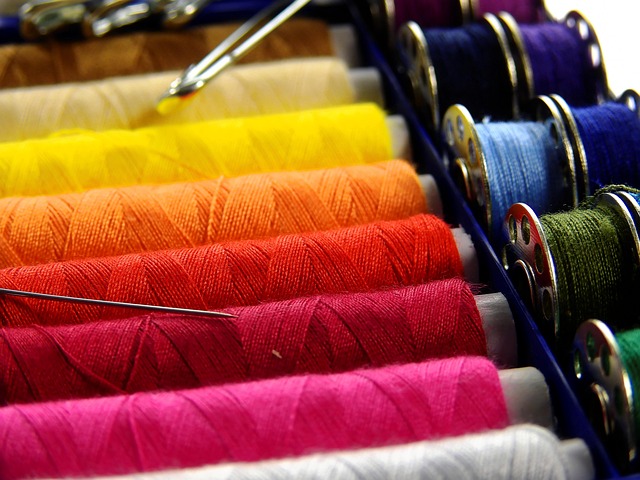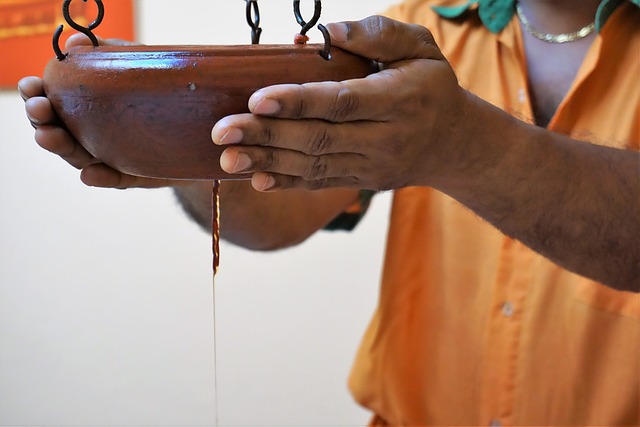-By: Bhavisha Changrani
Have you ever paused to truly admire your favorite t-shirt’s soft texture, or the way a cozy blanket wraps you in warmth? They’re not just pieces of cloth; they’re the result of a fascinating, almost magical journey, starting with tiny, almost invisible strands called fibers. Think of fibers as the miniature LEGO bricks that build everything from your comfy socks to the colorful curtains in your room. In your Class 6 Science chapter, “Fiber to Fabric,” you’ll become a textile detective, exploring how these fibers are transformed into the everyday fabrics we use. Imagine it as a behind-the-scenes tour of your entire wardrobe, revealing the secrets behind your clothes!

Let’s begin with the basics: what exactly are fibers? They’re thin, thread-like strands, much like the strands of your hair, that can be twisted together to make yarn. Yarn, in turn, is woven or knitted into fabric. Just like there are different types of building blocks, there are different types of fibers. We can broadly divide them into two categories: natural fibers, which are gifts from Mother Nature, and man-made, or synthetic, fibers, which are created in laboratories.
Natural fibers are like the ingredients in a delicious recipe, all coming from the earth. They come from plants and animals. Think of cotton, which comes from the fluffy bolls of the cotton plant, or wool, which comes from the fleece of sheep. Plant fibers are like the vegetables of the fabric world – essential and versatile! Let’s start with cotton, a champion of comfort. Imagine a vast field covered in fluffy white cotton balls, like tiny clouds on the ground. Farmers carefully pick these balls, and then the real magic begins. The cotton seeds are separated from the fibers in a process called “ginning.” Imagine gently combing out tangles from a long-haired doll’s hair – that’s kind of what ginning is like, but on a much larger scale! Then, the fibers are spun into yarn, like twisting strands of hair to make a strong, braided rope.
Another fascinating plant fiber is jute, the tough and sturdy cousin of cotton. Jute comes from the stem of the jute plant and is often used to make strong bags, ropes, and even mats. To get the jute fibers, the plant stems are soaked in water, which softens them, making it easier to separate the fibers. It’s like soaking a tough carrot to make it tender and easier to peel! This process, called retting, is like giving the plant a relaxing bath to loosen its fibers.

Now, let’s talk about animal fibers, the warm and fuzzy members of our fiber family. Wool is a warm and cozy fiber that comes from sheep, goats, and other animals. Imagine a sheep getting a much-needed haircut! That’s essentially what “shearing” is. The fleece is then cleaned, sorted, and spun into yarn. Wool is perfect for making warm sweaters and blankets, keeping us snug during cold weather, just like a warm hug. Did you know that different breeds of sheep have different types of wool? Some are softer, some are stronger, and some are even naturally colorful!
And then there’s silk, the royal member of animal fibers, known for its shimmering beauty. Silk comes from the cocoons of silkworms. These tiny creatures spin these cocoons, which are then
carefully unwound to get the silk threads. It’s a delicate and intricate process, and the result is a beautiful, shimmering fabric, like a fairy’s dress! The silkworm’s journey is truly amazing. It starts as a tiny egg, becomes a caterpillar that eats mulberry leaves, and then spins a cocoon to transform into a moth.
But what about those fabrics that don’t come from plants or animals, the ones that feel different? Those are synthetic fibers, made by humans from chemical substances. Think of them as the superheroes of the fabric world, often strong and durable, with special powers! Examples include nylon and polyester. These fibers are created in factories, and they have many unique properties that make them useful for different purposes, like making strong ropes or water-resistant jackets. Imagine a scientist mixing ingredients in a lab, but instead of making a potion, they’re creating a fiber!
Now that we know where fibers come from, let’s understand how they become fabric, the final product. The first step is spinning, the magical process of twisting fibers together to make yarn. Imagine twisting thin strands of cotton into a long, strong thread, like making a friendship bracelet. Traditionally, this was done using tools like the charkha and takli, but now we have machines that can spin yarn much faster, like a super-fast spinning wheel! Spinning is like giving the fibers a group hug, making them stronger together.

Once we have yarn, we can make fabric through weaving or knitting, like building a house with our yarn. Weaving involves interlacing two sets of yarn, called warp and weft, on a loom. Think of it as weaving a basket, but with yarn instead of reeds, creating a crisscross pattern. Knitting involves interlocking loops of yarn, using knitting needles or machines, like making a chain with loops – that’s essentially what knitting is, creating a connected series of loops. Weaving is often used to make flat, structured fabrics, while knitting is perfect for stretchy, flexible ones.
The difference between weaving and knitting is like the difference between making a brick wall and a chain-link fence. Weaving creates a more structured, often rigid fabric, like a solid wall, while knitting creates a flexible, stretchy fabric, like a chain-link fence that can move and bend. Imagine making a checkerboard with yarn – that’s weaving. Imagine making a long, connected scarf – that’s knitting.

By understanding these processes, you can appreciate the everyday magic in the fabrics that surround you. From the cotton in your t-shirt to the wool in your sweater, each fabric has a story to tell, a journey from nature or a factory to your closet. So, the next time you put on your clothes or snuggle under a blanket, remember the amazing journey from fiber to fabric! You’ll see the science behind the textiles and appreciate the hard work that goes into creating them, making everyday items feel a little more special. And remember, every piece of fabric you see has a story that begins with a tiny fiber!











